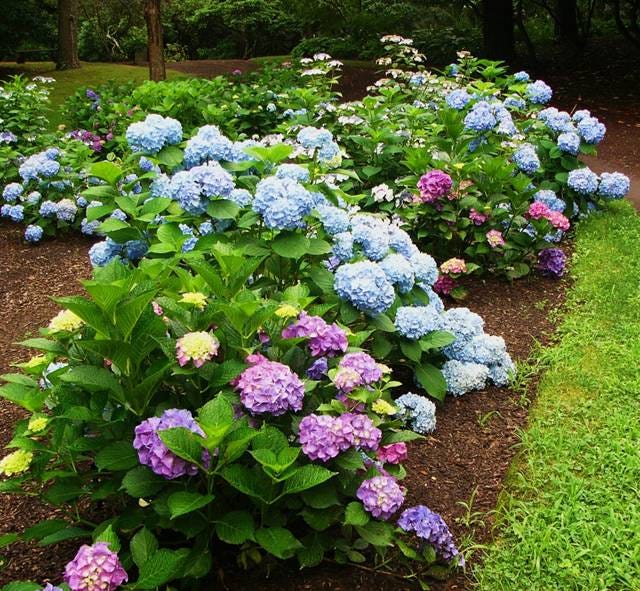Hydrangeas are a garden favorite. Here are five main types
Hydrangeas are a garden favorite, known for their cloud-like blooms and for being one of the few showy shade-tolerant plants. Hydrangeas prefer moist, well-drained soil, are pH sensitive, and prefer acidic soil with plenty of organic matter.
If you are preparing to plant hydrangeas for the first time or are hoping to improve existing plants, a soil test is a great place to start. There are five main types of hydrangea with different needs and a variety of characteristics to choose from.
Smooth hydrangea (arborescens)
This is one of the easiest hydrangeas to grow, with large, smooth leaves and large, white flowers.
The flowers bloom from late spring into summer, with the blooms changing color from green to white. After the flowers begin to brown, they should be removed to encourage a second late summer bloom.
Smooth hydrangeas prefer partial sun or shade and moist soil with a high organic matter content. The shape of the smooth hydrangea is arcuate with an overall height of between three and five feet.
In later winter, shrubs should be pruned back to six inches and fertilized at that time. The most popular and well-known of these smooth varieties of hydrangea is “Annabell”.
Bigleaf Hydrangea (Macrophylla)
These hydrangeas are named for their large, dark green, waxy leaves. The flowers last four to six weeks and bloom in July and August.
A common mistake with this hydrangea is pruning. Flowers are born on old wood, so pruning should be done only immediately after flowering.
There are two primary flower forms for bigleaf hydrangeas: lace caps with sepals encircling non-conspicuous inner flowers, and the hydrangeas, which form large balls of four-petalled sepals.
Bigleaf hydrangeas are often a visual clue to soil pH. In alkaline soil, the flowers are pink, while in acidic soil, blue flowers emerge. These shrubs grow three to five feet tall and wide.
PeeGee Hydrangeas (paniculata)
PeeGee has flowers that are white and six to eight inches long. Flowers appear in July and August on the current year’s growth. This means that pruning can be done in late winter or even early spring without risking flower loss.
“Grandiflora” is the most common PeeGee variety, growing 10 to 15 feet tall. PeeGee prefer sun to part shade and need well-drained soil to thrive.

Oakleaf Hydrangeas (Quercifolia)
Oakleaf hydrangeas have beautiful leaves with lobes that resemble an oak leaf. The leaves are dark green in spring and summer, turning burgundy in fall.
The foliage stays intact well into winter and has a peeling bark, making this an excellent plant for fall and winter interest in the garden.
These hydrangeas have June blooms that last for several weeks and often change from a white to a pink color as they mature. Oakleaf hydrangeas prefer partial sun and acidic soil – again rich in organic matter. Growing to between 4 and 6 feet tall, these hydrangeas are suckers and make excellent mass plantings.

Climbing Hydrangea (anomala subsp. Petiolaris)
These hydrangeas grow as a woody vine up to 60 feet in length. The woody stems of the climbing hydrangea will cling to almost any structure, so place the plants carefully as they can be difficult to remove.
The foliage of these plants is dark green, with stems that have shredded bark. Flowers are fragrant, appear from June to July and turn from green to white with age.
Climbing hydrangeas are adapted to sun or shade and tolerate most soils. Vines live for many years and often have few problems once they are established in the landscape.
Ariel Whitely-Noll is the former horticultural agent for Shawnee County Research and Extension.


Comments are closed.